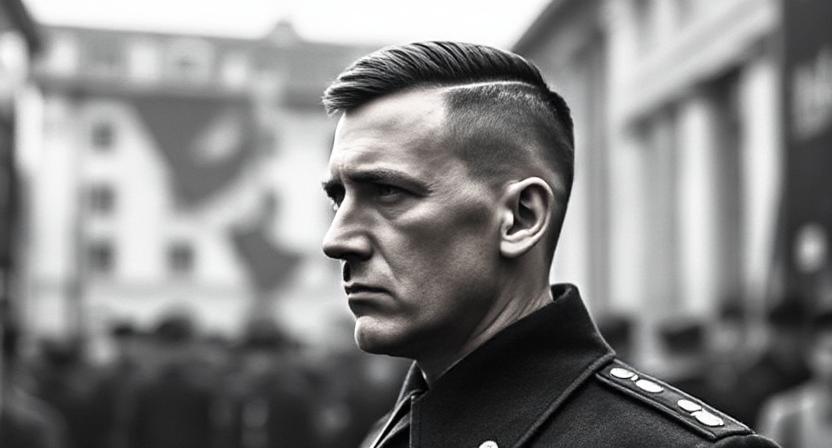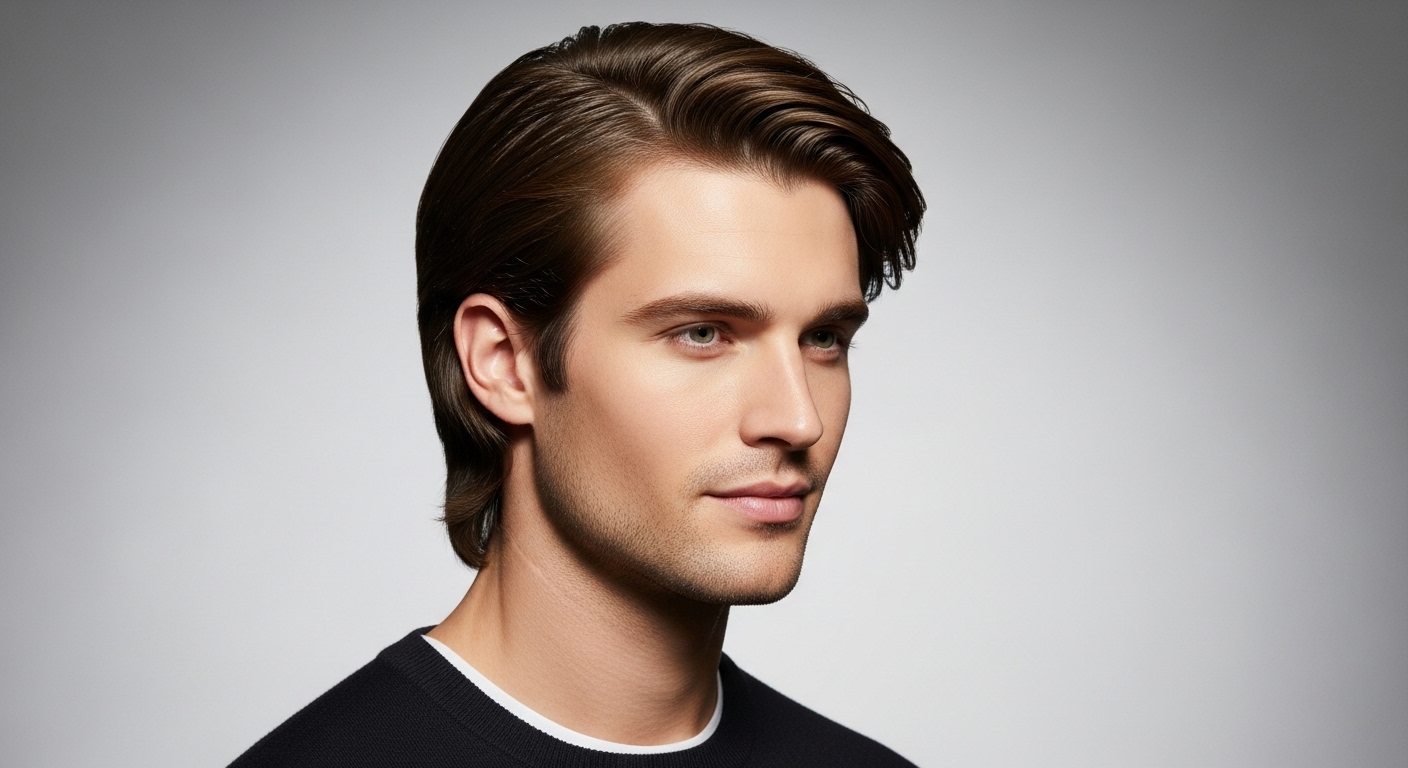When hairstyles have been the subject of conversation, most of the time events, people… or even some sort of pop culture influences came to mind. But there are a patch that refers to far more than style. One of those is the Hitler haircut. You definitely can not separate it from history, politics, or the heavy weight of the man who wore it. Yet, oddly enough, the style has gone on to appear in several other countries, being tied to different contexts, and getting very different reactions. This isn’t merely about hair. It covers the signs, collective memory, and how an issue as simple as a haircut can ignite dispute.
What Defines the Hitler Haircut?
The Hitler haircut is very recognizable one. Short on the sides, longer on top, parted in a slick way. To a large extent, it is similar to any other old military styled haircuts or even some modern ones. If you take the name off, someone could just call it a retro side part or a vintage look. However, names are significant.
Associations are important. That is the reason why when people see it, they seldom consider the grooming trends first—they think of Adolf Hitler, which is why the style is rarely requested at barbershops, unlike a modern line up haircut that has become a popular choice again.
A Look Back at Hair and Power
Hair has always been one of the ways to reveal the character and to make a statement. Kings were wearing crowns on their long hair. Soldiers often had regulated cuts. In Germany in the 1930s, Hitler’s hairstyle was very much associated with a very clear image: order, discipline, control.
He kept it neat and severe, and it became part of his public persona. That is somewhat the reason why it still provokes a response today.
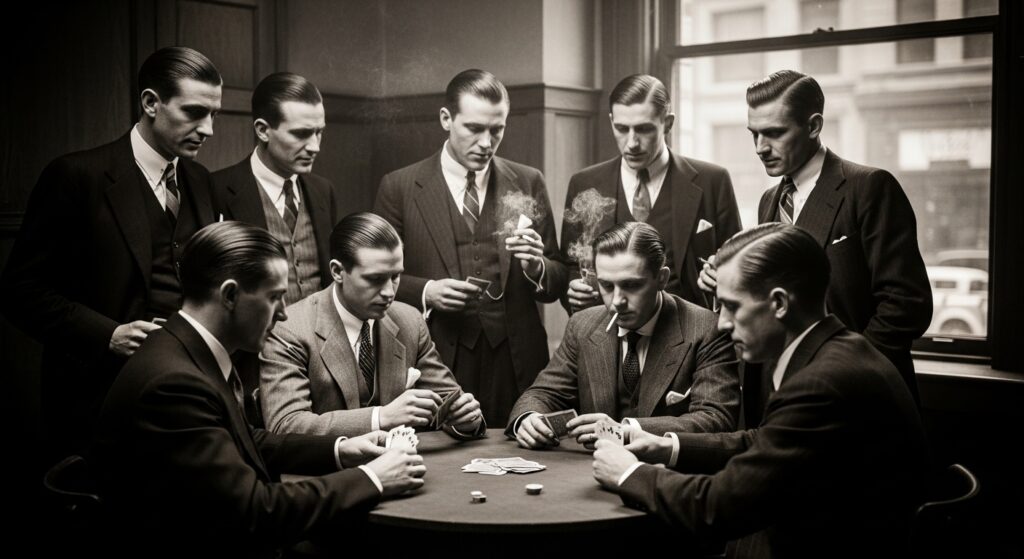
Regional Perceptions: Not the Same Everywhere
The reaction to a haircut of this nature is wildly different from one place to another. Without the context, it is difficult to see how things would be completely different.
In Germany and Europe
Presently in Germany, even the smallest hint of a resemblance to the Nazi insignia—no matter how far you want to take it—would result in the casting of distrustful glances.
It would not matter if the person wearing the haircut claimed that it was, “just a hairstyle.” Discomfort is evoked by the implied association directly.
In the United States
The situation is far from being clear and simple. Some individuals may be completely unaware and still wear similar haircuts. The others might deliberately copy it to provoke or demonstrate being a part of an extremist group.
Nevertheless, to a great number of Americans, that particular haircut is just one of the many retro or military-style haircuts, which they do not even remember after the first glance.
In Asia
For instance, Japan or South Korea are the countries where the trend of getting influenced by the Western fashion is still true but not the political aspect, in such places you may find people who have got this haircut only as a style choice without knowing the historical association of it.

When Fashion Collides With History
It isn’t any easier to swallow when the style and the dark past are one and the same. However, the wrong type of the Hitler haircut is not the only one in the case.
Celebrity Influence
One or two times celebrities have been seen to sport the same hairstyles, generally in the context of biopics or fashion campaigns.
The debates fan online with each occurrence. Was that on purpose? Is it just a nod to the past? Or is it insensitivity? That type of public reaction is partly responsible for having those discussions remain alive.
Subcultures and Extremist Groups
Neo-Nazi groups and far-right movements have basically no choice but to use this type of haircut in their visual presentation, as one of the elements that they could be identified with. It represents the things that they have in common with the others without actually having to speak.
It is that link which causes it to be more difficult for those who are not connected with them to wear it without it being seen as a sign of innocence in some areas of the world.
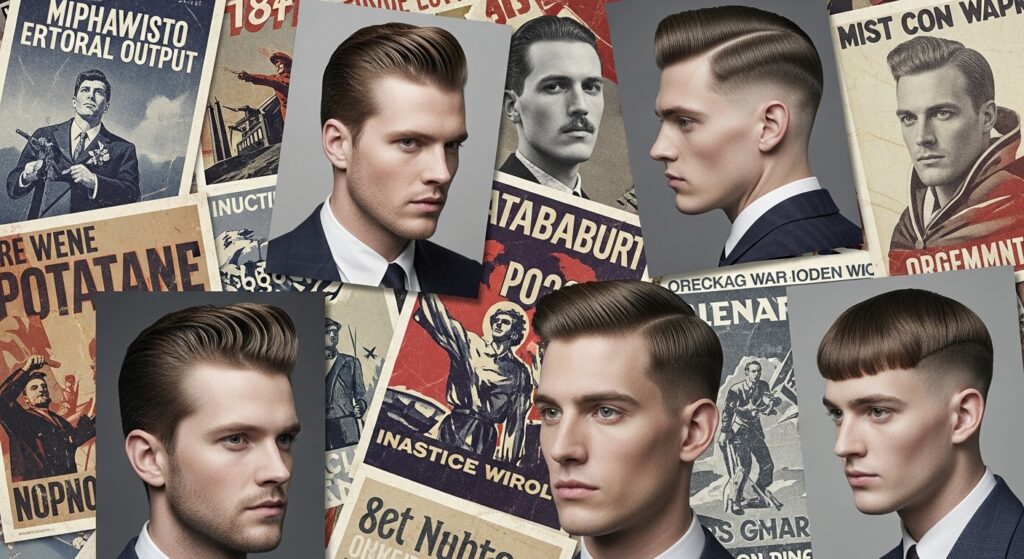
How the Haircut Is Viewed in Different Regions
| Region | Common Perception | Social Risk |
|---|---|---|
| Germany | Strongly negative, seen as provocative | Very high |
| Western Europe | Associated with history, discomfort | High |
| USA | Mixed, sometimes fashion, sometimes extremist | Medium |
| Asia | Often seen as style without full baggage | Low to medium |
| Middle East | Context-specific, often political | Medium |
Cultural Memory Shapes Reactions
Once the past gives a haircut historical significance, it is no longer just a haircut. The collective memory has a great influence on what people perceive. In Germany, schoolchildren are taught a lot about Hitler so any similarity leads to an instant identification right away.
The education about Hitler is less extensive in the U.S., thus the awareness is not the same in all places. In areas that are very far from the war, such a hairstyle may even be seen as untouched by politics.
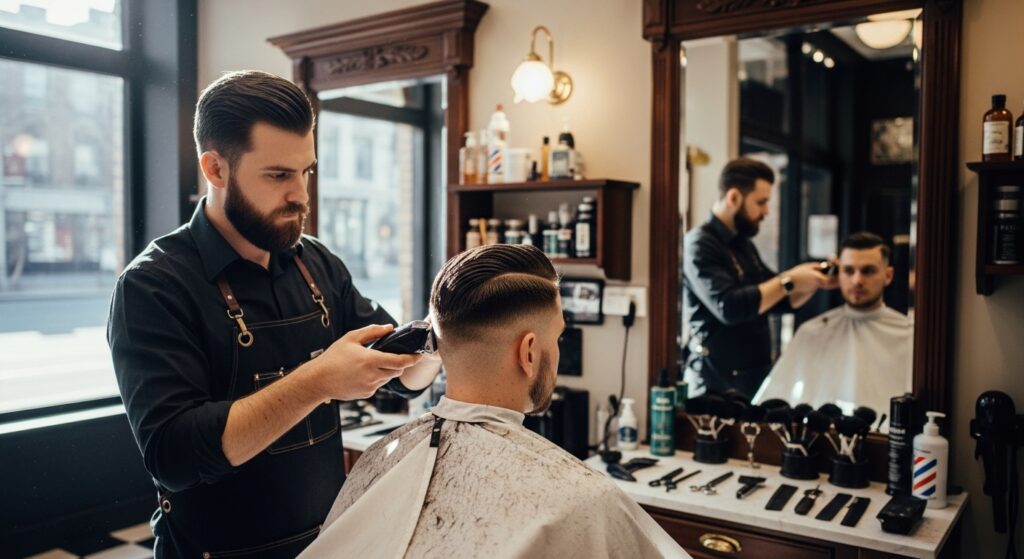
Why Some Still Choose It
Some individuals knowingly pick it as their hairdo if only to make a statement – be it rebellious, ironic, or extremist. There are also people who simply want a retro style that they can be proud of, similar to how some go for a bold Viking haircut to channel strength and heritage.
Then there is ignorance. Not everybody knows the details. A teen in Seoul who saw it in a K-drama might think that it looks neat without thinking about 1940s Germany.
Living Symbols and Lingering Questions
The hairstyle is one of the best examples of how the signs pass from one time to another. What comes from a mere grooming may be highly foiled with history, politics, and cultural aspects. The very same side-part which was formerly just “formal” is now haunted by memory.
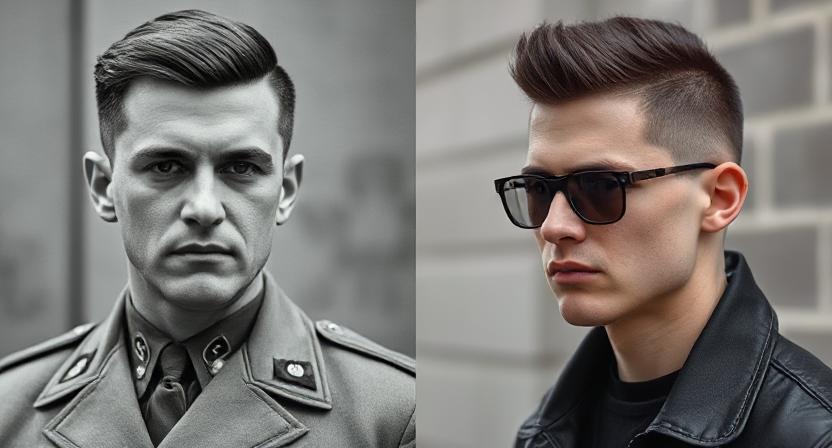
Final Thoughts
The hitler haircut isn’t only a thing of the past, it’s a reminder of how history can remain attached even to the tiniest of things. A hair parting. A crisp edge. A particular slickness.
What is considered fashion in one place may be seen as a provocation in another. And regardless of being right or not, those connections are not going to disappear anytime soon.
FAQs
1. Why the Hitler haircut is so controversial?
Due to its being the closest hairstyle to that of Adolf Hitler, the haircut is a carrier of historical and political troubles, especially in Europe.
2. Is the Hitler haircut just the same as a normal side-part?
In terms of hairstyles, they are the same, but the association with Hitler gives it a completely different meaning.
3. Are there still people who get this haircut today?
Yes, as a retro style, most of the time, but the reaction depends on the cultural context.
4. Is it illegal to wear the Hitler haircut in Germany?
The haircut as such is not prohibited; however, if someone is displaying it in a manner that indicates support for the Nazi regime, then he can receive legal or social sanctions.
5. How do people outside Europe view the Hitler haircut?
The hairstyle is considered to be a retro style in most areas; however, once the history is revealed, the association becomes more explicit.
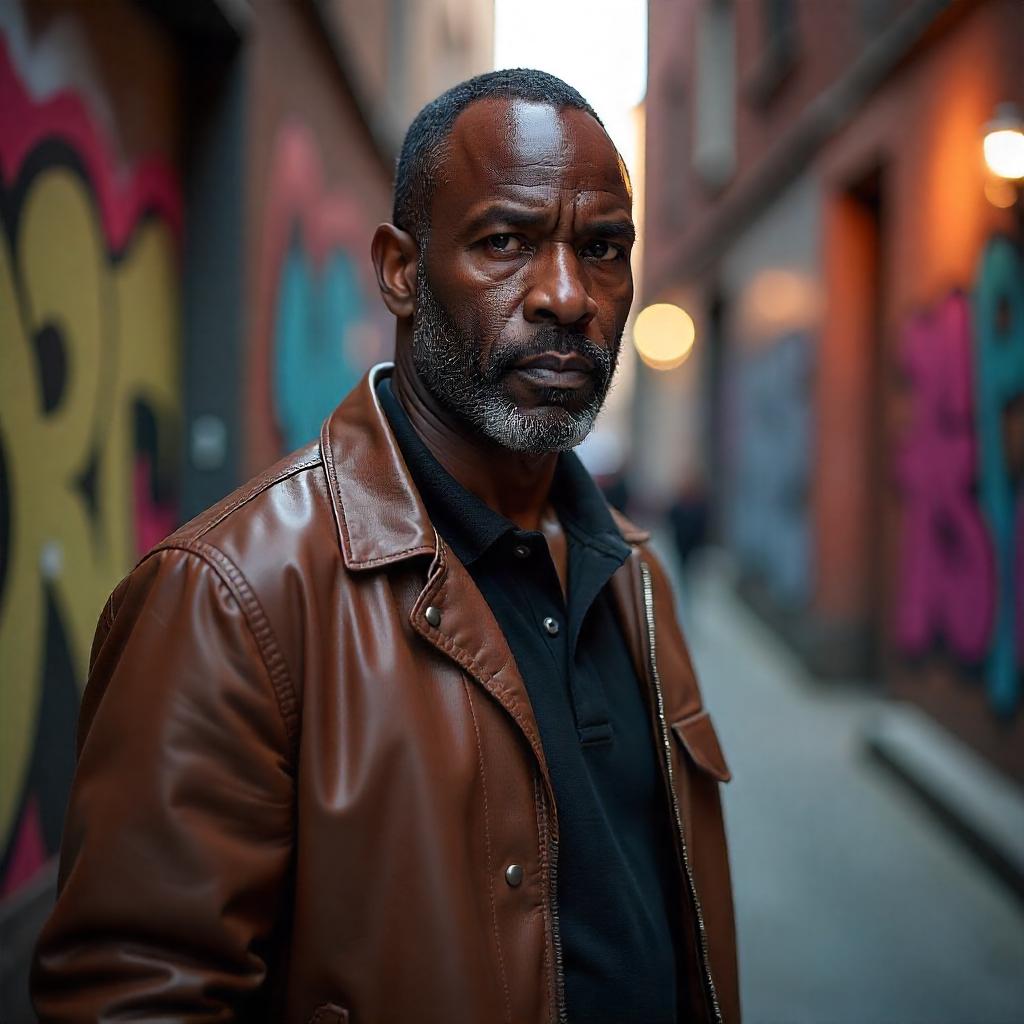
Alex Carey writes about men’s and women’s hairstyles, blending fashion insight with easy-to-follow haircare routines for every hair type. With a keen eye on seasonal trends, Alex helps readers stay updated on what’s hot and what’s not. From daily care tips to complete style makeovers, Alex covers it all.

